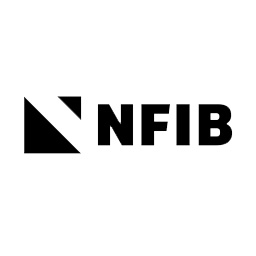
INDIANA – The NFIB Small Business Optimism Index decreased slightly in January to 97.1, down 1.8 points from December. Inflation remains a problem for small businesses as 22% of owners reported that inflation was their single most important business problem, unchanged from December when it reached the highest level since 1981. The net percent of owners raising average selling prices increased four points to a net 61% (seasonally adjusted), the highest reading since the fourth quarter of 1974.

“Significant tax cuts that would benefit all small businesses across the state are on the table and the Senate is holding the cards,” said Natalie Robinson, NFIB State Director in Indiana. “Our members appreciate the House Republicans’ $1 billion tax cuts package that would provide them with much-needed tax relief as they face historic workforce shortages and inflation levels that are the highest they’ve seen in over 40 years. Our small business owners here in Indiana urge the Senate to pass this tax cut package that would free up funds that owners could use to add jobs, increase wages, and expand their businesses. We can’t sit back and hope this opportunity comes back next year. It’s critical that the Senate acts on this proposal now.”
Key findings include:
- One of the Index components improved, seven declined, and two were unchanged.
- Owners expecting better business conditions over the next six months increased two points to a net negative 33%. Small business owners remain pessimistic about future economic conditions as this indicator has declined 13 points over the past six months.
- Forty-seven percent of owners reported job openings that could not be filled, a decrease of two points from December.
- Inventory accumulation plans fell five percentage points.
As reported in NFIB’s monthly jobs report, a net 50% (seasonally adjusted) reported raising compensation, a 48-year record high reading. A net 27% plan to raise compensation in the next three months. Eleven percent of owners cited labor costs as their top business problem and 23% said that labor quality was their top business problem.
Owners’ plans to fill open positions remain at record high levels, with a seasonally adjusted net 26% planning to create new jobs in the next three months, down two points from December and just six points below the highest reading in the 48-year history of the survey set in August.
Fifty-eight percent of small business owners reported capital outlays in the last six months, up one point from December. Of those owners making expenditures, 40% reported spending on new equipment, 22% acquired vehicles, 15% improved or expanded facilities, 8% acquired new buildings or land for expansion, and 15% spent money for new fixtures and furniture. Twenty-nine percent of owners plan capital outlays in the next few months, unchanged from December and two points higher than the 48-year average.
Seasonally adjusted, 2% of all owners reported higher nominal sales in the past three months. The net percent of owners expecting higher real sales volumes decreased by six points to a net negative 3%.
The net percent of owners reporting inventory change increased two points to a net 9%. Eighteen percent reported increases in stocks while 15% reported reductions. Thirty-six percent of owners report that supply chain disruptions have had a significant impact on their business. Another 32% report a moderate impact and 22% report a mild impact. Only 9% report no impact from recent supply chain disruptions. A net 7% of owners viewed current inventory stocks as “too low” in January, down two points. A net 3% of owners plan inventory investment in the coming months, down five points from December, reflecting the success in inventory building in the fourth quarter.
The net percent of owners raising average selling prices increased four points to a net 61% (seasonally adjusted), the highest reading since the fourth quarter of 1974. Price raising activity over the past 12 months has continued to escalate, reaching levels not seen since the early 1980s.
Five percent of owners reported lower average selling prices and 62% reported higher average prices. Price hikes were the most frequent in wholesale (88% higher, 3% lower), manufacturing (71% higher, 1% lower), retail (69% higher, 4% lower), and construction (67% higher, 5% lower). Seasonally adjusted, a net 47% of owners plan price hikes.
The frequency of reports of positive profit trends decreased three points to a net negative 17%. Among the owners reporting lower profits, 32% blamed the rise in the cost of materials, 19% blamed weaker sales, 9% cited labor costs, 18% cited the usual seasonal change, 7% cited lower prices, and 3% cited higher taxes or regulatory costs. For owners reporting higher profits, 63% credited sales volumes, 12% cited usual seasonal change, and 13% cited higher prices.
Three percent of owners reported that all their borrowing needs were not satisfied. Twenty-five percent reported all credit needs met and 62% said they were not interested in a loan. A net 2% reported their last loan was harder to get than in previous attempts. One percent reported that financing was their top business problem. A net 4% of owners reported paying a higher rate on their most recent loan.
The NFIB Research Center has collected Small Business Economic Trends data with quarterly surveys since the 4th quarter of 1973 and monthly surveys since 1986. Survey respondents are randomly drawn from NFIB’s membership. The report is released on the second Tuesday of each month. The survey was conducted in January 2022.



